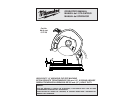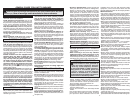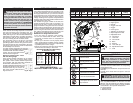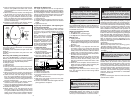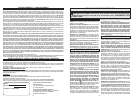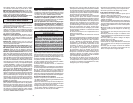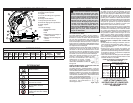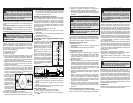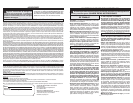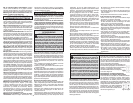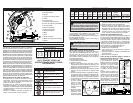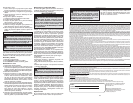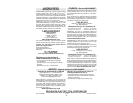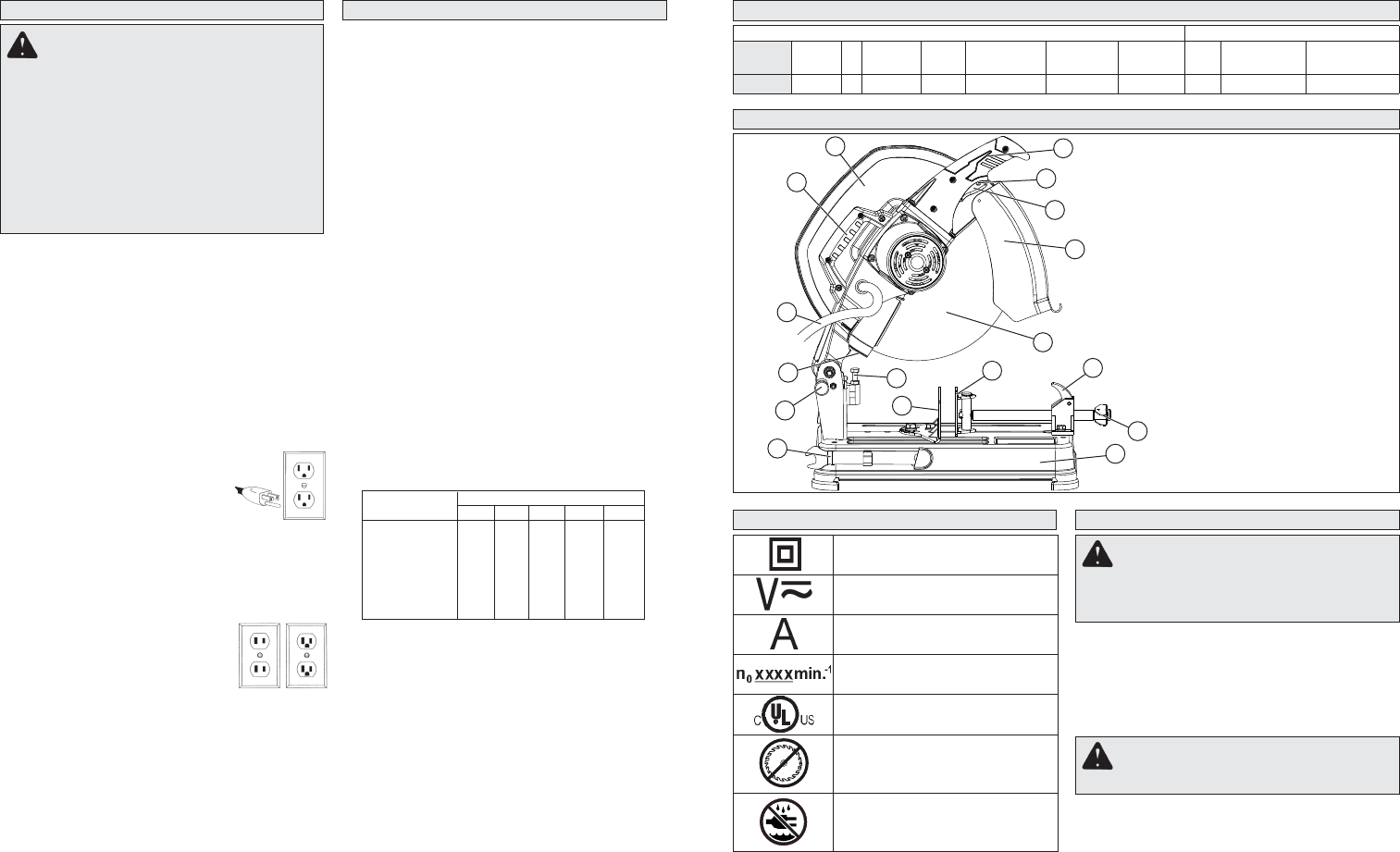
4
5
GROUNDING
WARNING Improperly connecting the
grounding wire can result in the risk of
electric shock. Check with a qualifi ed electri-
cian if you are in doubt as to whether the
outlet is properly grounded. Do not modify
the plug provided with the tool. Never remove
the grounding prong from the plug. Do not
use the tool if the cord or plug is damaged. If
damaged, have it repaired by a MILWAUKEE
service facility before use. If the plug will not
fi t the outlet, have a proper outlet installed by
a qualifi ed electrician.
Grounded Tools: Tools with Three Prong Plugs
Tools marked “Grounding Required” have a three
wire cord and three prong grounding plug. The
plug must be connected to a properly grounded
outlet (See Figure A). If the tool should electrically
malfunction or break down, grounding provides a
low resistance path to carry electricity away from
the user, reducing the risk of electric shock.
The grounding prong in the plug is connected
through the green wire inside the cord to the
grounding system in the tool. The green wire in the
cord must be the only wire connected to the tool's
grounding system and must never be attached to
an electrically “live” terminal.
Your tool must be plugged into an appropri-
ate outlet, properly installed and grounded in
accordance with all codes and ordi-
nances. The plug and outlet should
look like those in Figure A.
Double Insulated Tools: Tools
with Two Prong Plugs
Tools marked “Double Insulated” do not require
grounding. They have a special double insula-
tion system which satisfi es OSHA requirements
and complies with the applicable standards of
Underwriters Laboratories, Inc., the
Canadian Standard Association and
the National Electrical Code. Double
Insulated tools may be used in ei-
ther of the 120 volt outlets shown in
Figures B and C.
Grounded tools require a three wire extension
cord. Double insulated tools can use either a two
or three wire extension cord. As the distance from
the supply outlet increases, you must use a heavier
gauge extension cord. Using extension cords with
inadequately sized wire causes a serious drop in
voltage, resulting in loss of power and possible tool
damage. Refer to the table shown to determine the
required minimum wire size.
The smaller the gauge number of the wire, the
greater the capacity of the cord. For example, a 14
gauge cord can carry a higher current than a 16
gauge cord. When using more than one extension
cord to make up the total length, be sure each cord
contains at least the minimum wire size required. If
you are using one extension cord for more than one
tool, add the nameplate amperes and use the sum
to determine the required minimum wire size.
Guidelines for Using Extension Cords
• If you are using an extension cord outdoors,
be sure it is marked with the suffi x “W-A” (“W”
in Canada) to indicate that it is acceptable for
outdoor use.
• Be sure your extension cord is properly wired
and in good electrical condition. Always replace
a damaged extension cord or have it repaired by
a qualifi ed person before using it.
• Protect your extension cords from sharp objects,
excessive heat and damp or wet areas.
READ AND SAVE ALL
INSTRUCTIONS FOR FUTURE USE.
Recommended Minimum Wire Gauge
for Extension Cords*
Extension Cord Length
* Based on limiting the line voltage drop to fi ve volts
at 150% of the rated amperes.
Nameplate
Amperes
0 - 2.0
2.1 - 3.4
3.5 - 5.0
5.1 - 7.0
7.1 - 12.0
12.1 - 16.0
16.1 - 20.0
25'
18
18
18
18
16
14
12
75'
18
18
16
14
12
10
100'
18
16
14
12
10
150'
16
14
12
12
50'
18
18
18
16
14
12
10
EXTENSION CORDS
Fig. B
Fig. C
Fig. A
SYMBOLOGY
Double Insulated
Volts
Alternating/Direct Current
Amps
No Load Revolutions per
Minute (RPM)
Underwriters Laboratories, Inc.
United States and Canada
Do not use toothed blades.
Do not expose to rain or use in
damp locations.
SPECIFICATIONS
Tool Max. Capacities at 90°
Cat. No.
Volts
AC A
No Load
RPM
Wheel
Size
Min. Wheel
RPM Rating
Wheel
Thickness
Arbor
Hole Size
O.D.
Pipe
Rectangular
Stock
Sq.
Tubing
6177-20 120 15 3900 14" 4300 3/32” 1" 5" 2-15/16" x 9" 4-5/8" x 4-5/8"
FUNCTIONAL DESCRIPTION
1. Carrying handle
2. Upper guard
3. Handle
4. Trigger lock hole
5. Trigger
6. Lower guard
7. Abrasive cut-off wheel
8. Depth adjustment bolt
9. Adjustable fence
10. Vise clamp
11. Lock lever
12. Vise handle
13. Base
14. Wrench
15. Lock down pin
16. Spindle lock button
17. Cord
2
1
5
4
6
7
17
8
9
10
11
12
15
16
13
14
3
ASSEMBLY
WARNING To reduce the risk of injury,
always unplug tool before attaching
or removing accessories or making adjust-
ments. Use only specifi cally recommended
accessories. Others may be hazardous.
Raising and Lowering the Head
The head must be locked down for transporting
and storing the tool.
To unlock, press head down and pull out the lock
down pin.
To lock, press head down and push in the lock
down pin.
Removing and Installing Cut-Off Wheels
Use only MILWAUKEE 14" Abrasive Cut-Off
Wheels, 3/32” thick with this tool. Before operating
the tool, make sure the wheel is in good condition
as described in the “Specifi c Safety Rules”.
To change wheels:
1. Unplug the tool.
2. Raise the head.
WARNING To reduce the risk of injury,
use only the proper wheel for this ma-
chine. DO NOT USE ANY TYPE OF SAW BLADE.



